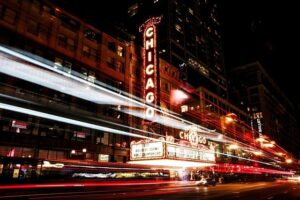Chicago Media Outlets Sue ICE and DHS Over Alleged Use of Excessive Force on Journalists
Media Organizations Challenge Federal Agencies Over Reporter Safety Concerns
A coalition of Chicago-based news organizations has initiated legal proceedings against U.S. Immigration and Customs Enforcement (ICE) and the Department of Homeland Security (DHS), accusing federal agents of deploying disproportionate force against journalists covering enforcement operations and protests. This lawsuit, highlighted by the Chicago Tribune, raises significant questions about the protection of press freedoms and the accountability of government entities in managing public demonstrations.
The complaint details multiple instances where reporters were reportedly subjected to aggressive physical contact, interference with press credentials, and unjustified detentions. Media advocates stress their essential role in promoting transparency and demand that federal agencies address what they describe as a recurring pattern of hostility toward journalists.
- Alleged Incidents: Physical confrontations and inappropriate use of crowd control tactics targeting reporters.
- Legal Grounds: Breaches of First Amendment rights safeguarding freedom of the press.
- Desired Remedies: Implementation of policy reforms, enhanced accountability, and protective measures for media professionals.
Consequences of Excessive Force Allegations on Press Freedom and Journalist Well-being
Claims of excessive force against journalists have intensified concerns about balancing law enforcement duties with constitutional protections. When reporters face intimidation or violence, it not only endangers their personal safety but also threatens the public’s access to vital details. Such incidents can deter journalists from covering contentious events, thereby diminishing public oversight and democratic engagement.
Experts in media law emphasize the necessity of thorough strategies to safeguard journalists, including:
- Explicit protocols guiding law enforcement interactions with the press during protests.
- Specialized training to prevent confrontations between officers and media personnel.
- Strong legal protections to hold agencies accountable for misconduct.
| Area of Impact | Potential Effects |
|---|---|
| Freedom of the Press | Increased self-censorship and reduced event coverage |
| Journalist Safety | Risk of physical injury and psychological stress |
| Public Knowledge | Restricted access to accurate information and rise in misinformation |
Addressing these issues is vital to maintaining a free and informed society where journalists can operate without fear of retaliation.
Legal Challenges in Holding Federal Agencies Responsible for Press Rights Violations
The lawsuit against ICE and DHS highlights the complexities involved in enforcing accountability when federal officers allegedly infringe upon journalists’ rights. A central legal hurdle is the doctrine of qualified immunity, which often protects law enforcement personnel from civil lawsuits unless their actions violate clearly established legal standards. Critics argue this doctrine creates an excessively high threshold for reporters seeking justice for incidents of excessive force or obstruction during news coverage, especially in tense protest environments.
Key legal considerations shaping the case include:
- First Amendment Safeguards: Ensuring journalists can report without fear of intimidation or unlawful interference.
- Evidence Requirements: Proving intentional misconduct or systemic policies that enable abuse.
- Accountability Structures: Scrutinizing internal disciplinary processes and transparency in use-of-force policies.
| Legal Element | Impact on Media Rights |
|---|---|
| Qualified Immunity | Restricts liability unless clear legal precedent exists |
| First Amendment | Protects freedom of the press and limits unjustified force |
| Federal Oversight | Opportunities for reform to improve transparency and obligation |
Strategies to Enhance Journalist Protections During Government Enforcement Actions
Ensuring the safety and rights of journalists covering sensitive government operations requires the adoption of clear, enforceable policies by law enforcement agencies. ICE, DHS, and similar bodies should undergo rigorous training focused on respecting First Amendment rights, including strict prohibitions against needless physical force or unjustified confiscation of media equipment. Establishing open interaction channels between media representatives and government officials can definitely help prevent misunderstandings and reduce confrontations during coverage.
Additional recommended measures include:
- Mandatory body-worn cameras for officers interacting with the press to provide objective records of encounters.
- Rapid response teams comprising legal experts and media liaisons to promptly address incidents involving journalists.
- Standardized complaint procedures that ensure timely investigation and resolution of press-related grievances.
| Policy Focus | Recommended Action | Anticipated Benefit |
|---|---|---|
| Law Enforcement Education | Compulsory training on journalists’ constitutional rights | Fewer incidents of force against media personnel |
| Incident Recording | Use of body cameras during press interactions | Greater transparency and accountability |
| Complaint Management | Expedited reporting and investigation protocols | Swift resolution and deterrence of violations |
Looking Ahead: The Broader Implications of the Lawsuit
The ongoing lawsuit filed by Chicago media entities against ICE and DHS highlights persistent frictions between federal law enforcement and the press. Advocates for journalistic freedom stress the urgent need for reforms that guarantee reporters can fulfill their critical role without fear of excessive force or intimidation.The outcome of this case may set important precedents affecting how government agencies engage with the media, not only in Chicago but across the nation.








